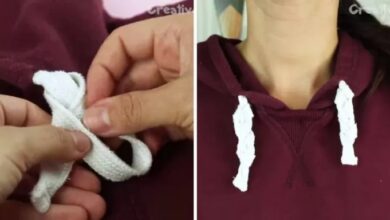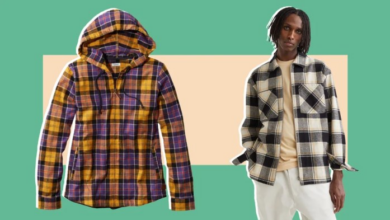
Sew a simple cotton top, a project perfect for beginners, opens the door to creating a wardrobe staple that’s both stylish and comfortable. This guide walks you through the process from choosing the right fabric to adding finishing touches, empowering you to create your own personalized piece.
We’ll delve into the different types of cotton fabrics, explore pattern options and customization techniques, and provide a detailed step-by-step guide for sewing your top. From selecting the perfect neckline and sleeve length to mastering essential sewing techniques, this guide is your comprehensive companion for crafting a beautiful cotton top.
Choosing the Right Fabric: Sew A Simple Cotton Top
Cotton is a popular choice for tops because it’s breathable, comfortable, and easy to care for. But with so many different types of cotton fabrics available, it can be tough to know which one is right for your project. This guide will help you choose the perfect cotton fabric for your simple top.
Cotton Fabric Types
When choosing a cotton fabric for your top, consider the weight, drape, and suitability for different styles. Here is a comparison of common cotton fabric types:
| Fabric Type | Weight | Drape | Suitability |
|---|---|---|---|
| Broadcloth | Medium-weight | Slight drape | Button-down shirts, blouses, dresses |
| Poplin | Lightweight | Slight drape | Casual tops, shirts, dresses |
| Batiste | Lightweight | Soft drape | Summer tops, blouses, nightgowns |
| Voile | Lightweight | Flowing drape | Flowy tops, scarves, curtains |
| Chambray | Lightweight to medium-weight | Slight drape | Casual tops, shirts, dresses |
| Flannel | Medium-weight | Soft drape | Casual tops, shirts, pajamas |
| Twill | Medium-weight | Slight drape | Casual tops, shirts, pants |
Benefits of Pre-Washed Cotton
Pre-washed cotton is a great choice for sewing simple tops. Here are some benefits:
Pre-washed cotton has already been shrunk, so it’s less likely to shrink after you wash it.
Pre-washed cotton is often softer and more comfortable than unwashed cotton.
Pre-washed cotton is easier to work with because it’s less likely to fray or unravel.
Cutting and Preparing the Fabric

Now that you have chosen the perfect fabric for your cotton top, it’s time to get your hands dirty (figuratively, of course!). The next step is to cut out the pattern pieces from your fabric, ensuring accuracy and precision for a well-fitting and beautiful final product.
Laying Out the Pattern Pieces
Laying out the pattern pieces on the fabric is the first step in cutting. This step is crucial for ensuring that all the pieces are cut in the correct direction and that they are aligned properly.
- Spread out your fabric on a flat surface, ensuring that it is smooth and free of wrinkles.
- Place the pattern pieces on the fabric according to the instructions provided in your pattern. The pattern will typically indicate the grain line and the direction of the fabric.
- Pin the pattern pieces to the fabric, making sure that they are held securely in place.
- Use a ruler or measuring tape to check that the pattern pieces are aligned correctly and that the fabric is not stretched or distorted.
Using Sharp Fabric Shears, Sew a simple cotton top
Using sharp fabric shears is essential for making clean and precise cuts. Dull shears can cause fraying and uneven edges, which can affect the final appearance of your garment.
- Invest in a good pair of fabric shears, and keep them sharp by regularly sharpening them.
- When cutting, hold the shears perpendicular to the fabric and cut with a steady, smooth motion.
- Avoid cutting through multiple layers of fabric at once, as this can cause the fabric to shift and result in uneven cuts.
Marking the Fabric
Marking the fabric for darts, pleats, and other design details is an important step that ensures accuracy and precision in sewing.
- Use a fabric marker or tailor’s chalk to mark the fabric according to the pattern instructions.
- Be sure to use a marker that will wash out easily, especially for light-colored fabrics.
- Mark all the necessary details, such as the dart points, the fold lines for pleats, and the placement of buttons or buttonholes.
Sewing a simple cotton top is a great way to add a personalized touch to your wardrobe. It’s a project that’s perfect for beginners, and you can customize it with different colors, patterns, and embellishments. While I was working on my latest cotton top creation, I stumbled upon the news that the htc one a9 finally revealed its sleek design and impressive features.
It’s definitely a phone that caught my eye, but for now, I’m sticking to my sewing machine and creating some stylish new pieces for my summer wardrobe.
Sewing a simple cotton top is a great way to practice your skills and create a versatile piece for your wardrobe. It’s a project that’s perfect for beginners, as it doesn’t require any complex techniques. If you’re looking for a bigger project, perhaps something for your kids, check out this guide on how to build a toy box , which is a great way to organize their toys and add a touch of charm to their room.
Once you’ve tackled those projects, you can move on to more intricate designs, like adding lace or embellishments to your cotton top.
Sewing a simple cotton top is a great beginner project, and it’s amazing how a few basic stitches can transform fabric into something wearable. If you’re looking for a fun way to personalize your creations, try adding some handmade details, like patterned photo mats.
Making your own patterned photo mats is a fantastic way to add a unique touch to your projects, and the techniques can even be applied to fabric embellishments on your cotton top!






